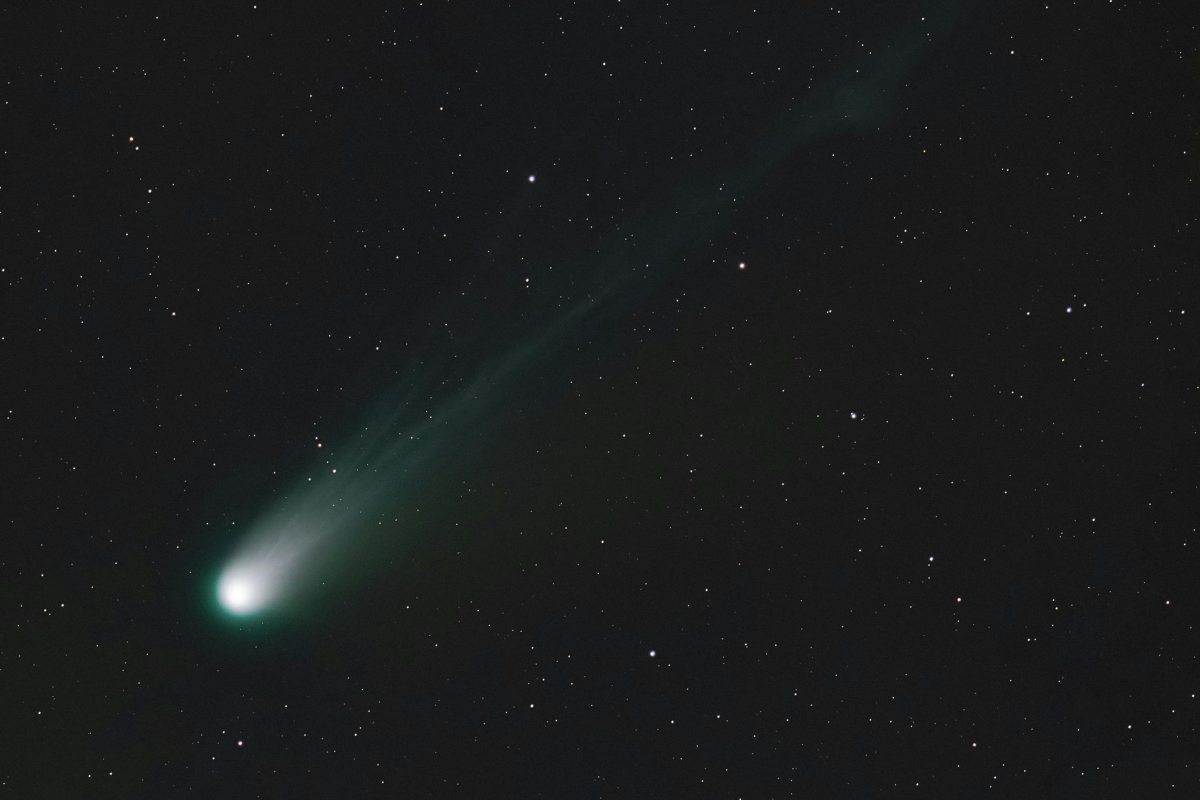Science
Elon Musk Weighs In on 3I/ATLAS: Could It Be Aliens?

The interstellar comet 3I/ATLAS, discovered on July 1, 2025, has sparked renewed speculation about extraterrestrial life. During a recent interview on the Joe Rogan Experience, Tesla CEO Elon Musk shared his thoughts on the object, suggesting that while he does not believe it is an alien spacecraft, he acknowledged the possibility of its extraterrestrial origins. This marks the third confirmed interstellar visitor to our Solar System, following 1I/’Oumuamua in 2017 and 2I/Borisov in 2019.
3I/ATLAS has captured public attention due to its unusual characteristics. It exhibits anomalous accelerations and lacks a visible tail, prompting scientists and enthusiasts to explore its origins. On October 30, 2025, the comet reached its perihelion, showcasing a radial acceleration of 1.1 x 10^{-6} au per day squared away from the Sun and a transverse acceleration of 3.7 x 10^{-7} au per day squared.
Recent images from the Hubble Space Telescope have revealed the comet’s growing ion tail, while a radio signal detected from the object has puzzled observers. Though initially thought to be an indicator of alien activity, further scientific analysis concluded that the signal is of natural origin. As 3I/ATLAS approaches its closest point to Earth on December 19, 2025, at a distance of 270 million kilometers, astronomers worldwide are closely monitoring its velocity of 57 km/s and dust cross-section of 230 km² for clues about its formation.
Musk’s remarks during the podcast included a stark warning about the potential dangers posed by the comet. “It would like obliterate a continent type of thing,” he stated, further emphasizing the risks to humanity. His comments have intensified discussions on social media, as users debate the implications of 3I/ATLAS and what it could mean for the future of space exploration.
While Musk expressed skepticism about the object being an alien spacecraft, he did entertain the idea by stating, “It could be alien, I don’t know.” This mix of skepticism and curiosity reflects the dual nature of such discoveries: they are both fascinating and potentially hazardous.
Astrophysicist Avi Loeb from Harvard has fueled these discussions by suggesting that the anomalies associated with 3I/ATLAS could indicate extraterrestrial technology. He pointed to the comet’s non-gravitational accelerations and absence of a tail as factors that warrant further investigation.
Despite the excitement surrounding the potential for alien contact, many experts have reiterated that evidence points towards 3I/ATLAS being a natural comet. As stated in recent studies, “Despite claims that 3I/ATLAS may be an alien spaceship, a growing body of observations reveals it’s a natural comet.”
The clash between imaginative speculation and empirical evidence illustrates the compelling nature of astronomical discoveries. The ongoing dialogue has prompted calls for advanced detection systems to monitor future interstellar objects more effectively.
As 3I/ATLAS continues its journey through our Solar System, NASA’s planned high-resolution images will likely provide further insights. Whether it serves as a harbinger of alien contact or simply as an icy relic from the depths of space, its presence reignites humanity’s quest to understand the cosmos and raises awareness of potential interstellar threats.
-

 Health2 months ago
Health2 months agoNeurologist Warns Excessive Use of Supplements Can Harm Brain
-

 Health3 months ago
Health3 months agoFiona Phillips’ Husband Shares Heartfelt Update on Her Alzheimer’s Journey
-

 Science4 weeks ago
Science4 weeks agoBrian Cox Addresses Claims of Alien Probe in 3I/ATLAS Discovery
-

 Science4 weeks ago
Science4 weeks agoNASA Investigates Unusual Comet 3I/ATLAS; New Findings Emerge
-

 Science3 weeks ago
Science3 weeks agoScientists Examine 3I/ATLAS: Alien Artifact or Cosmic Oddity?
-

 Science3 weeks ago
Science3 weeks agoNASA Investigates Speedy Object 3I/ATLAS, Sparking Speculation
-

 Entertainment4 months ago
Entertainment4 months agoKerry Katona Discusses Future Baby Plans and Brian McFadden’s Wedding
-

 World2 months ago
World2 months agoCole Palmer’s Cryptic Message to Kobbie Mainoo Following Loan Talks
-

 Entertainment4 months ago
Entertainment4 months agoEmmerdale Faces Tension as Dylan and April’s Lives Hang in the Balance
-

 Science3 weeks ago
Science3 weeks agoNASA Scientists Explore Origins of 3I/ATLAS, a Fast-Moving Visitor
-

 Entertainment4 months ago
Entertainment4 months agoLove Island Star Toni Laite’s Mother Expresses Disappointment Over Coupling Decision
-

 Entertainment3 months ago
Entertainment3 months agoMajor Cast Changes at Coronation Street: Exits and Returns in 2025









